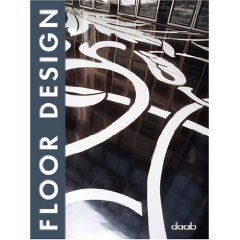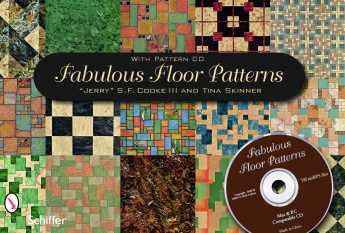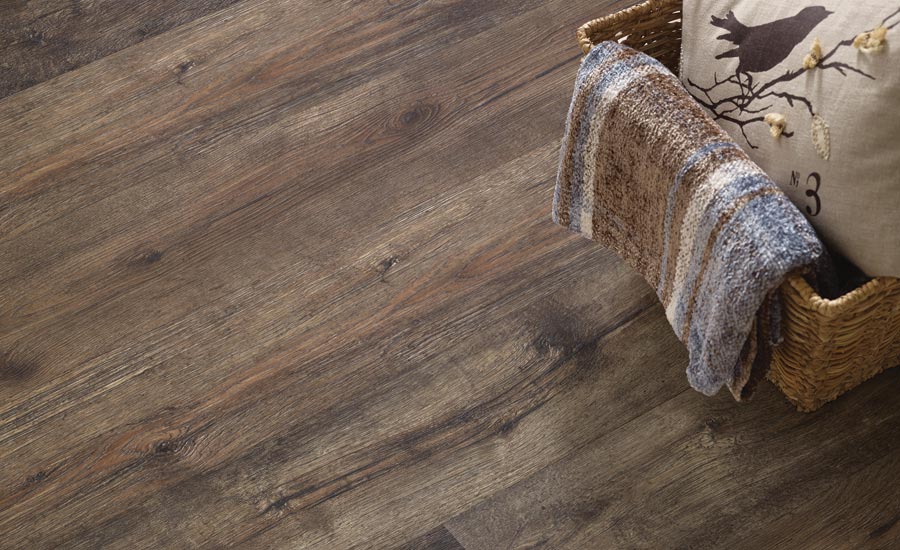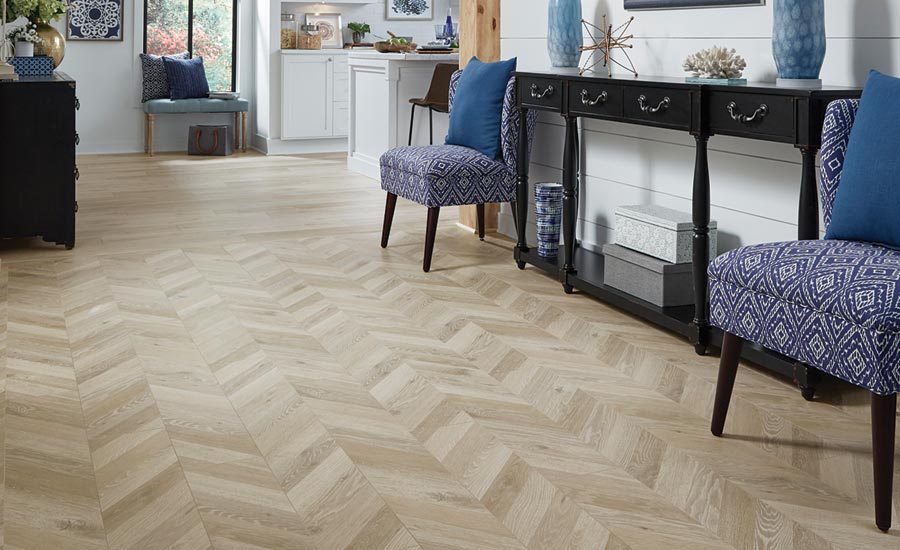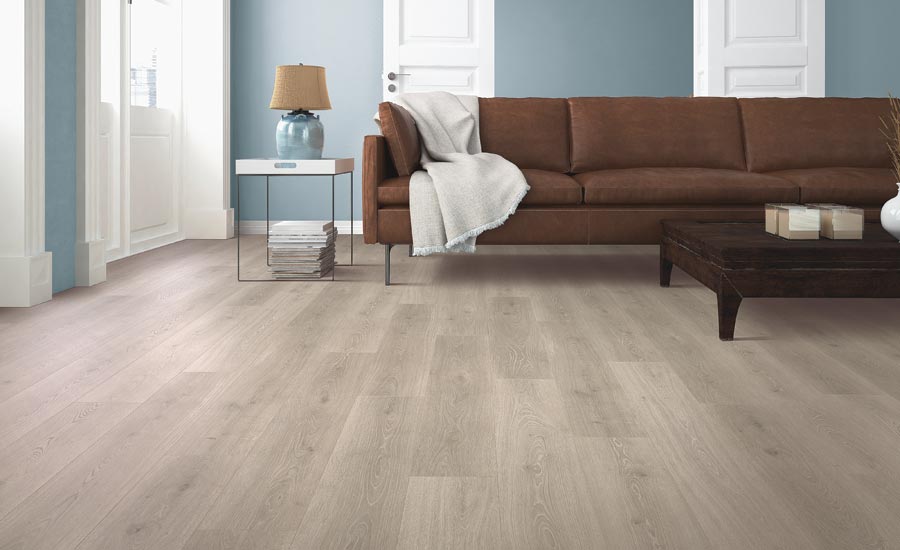A Fresh Look at Laminate

Shaw Floors’ Repel water-resistance technology gives consumers plenty of time to clean up spills from daily life.
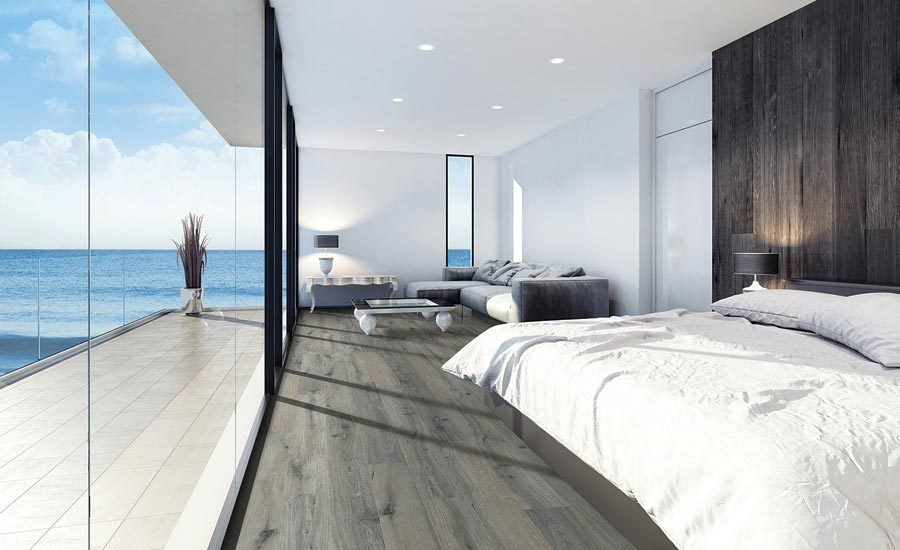



Swiss Krono’s laminate is an affordable, safe, make-sense option for most flooring applications.





The laminate category has upped its game, now offering end users the best of all worlds when it comes to flooring. Whether it be great visuals, water resistance, low maintenance, durability, and sustainability, today’s laminate manufacturers have dramatically upgraded their offerings, allowing this mature product to remain one of the most sought-after options in today’s competitive market.
With the introduction of luxury vinyl tile causing a paradigm shift in the flooring industry, Mohawk’s Adam Ward, senior director of wood and RevWood, says that recent advancements and innovations in the laminate category are giving end users a reason to reconsider laminate.
“Laminate is one that, I would say, the flooring industry as a whole has not focused on as much as it has in past years,” said Ward. “There’s a lot of great things happening with our laminate products. The recent innovations that particularly Mohawk has done in waterproof give you advantages over things like LVT.”
“We see laminate flooring continuing to grow as an industry leader in value given its mix of performance characteristics, design attributes and cost base,” said Derek Welbourne, CEO, Inhaus. “The relatively recent advancements in water-resistant laminates have further added value to the category and have contributed to increased demand as laminates can now be installed in areas that were previously challenging.”
These characteristics make the laminate we know and love today much different than the laminate our parents and grandparents had, says Tami Stahl, senior marketing manager, Beauflor. “Laminate has definitely evolved for the better over the past few years. Most of the innovations in laminate have been made to meet the needs of today’s consumers who require their floors to be water resistant, highly durable and easy to maintain.”
As recent as the last five years, the category has seen drastic changes, says Dan Natkin, vice president of hardwood and laminate, Mannington Mills. “Today’s laminate floors are not the same as they were even five years ago. The visuals are sharper and more realistic due to improved print technologies, the product is far more moisture and spill resistant than it has ever been and improvements to press technology make the textures even more lifelike.”
“Most of the innovations in laminate have been made to meet the needs of today’s consumers who require their floors to be water resistant, highly durable and easy to maintain.”
– Tami Stahl
Thanks to advancements in high-resolution printing, laminate now features incredibly sophisticated designs. “We are able to achieve the realistic visuals of grouted tile, natural wood plank and stone,” said John Hammel, director of category management, hardwood and laminate, Shaw Industries. “Embossed-in-register technology also allows us to emulate texture and add depth to the flooring product.”
Since laminate is a printed product, there’s no limit to the designs that can be offered. If you can think it, manufacturers can create it. “It could be a pink and green tie dye pattern if that’s what the market called for,” said Natkin. “Today’s consumer desires looks that coordinate with her furnishings; wood planks in wider, longer sizes that look like real wood. Everything from Farmhouse Chic to Urban Modern.”
Thanks to lifelike visuals, textures and finishes, manufacturers say that consumers are often unable to tell the difference between laminate and the material it’s replicating, solely by appearance. But what’s really giving laminate its competitive edge is its durability, they say.
“Durability is really laminate’s competitive edge, and laminate’s price point combined with its durability make it a great value,” says Hammel.
Shaw’s Repel Laminate, for example, features high-definition printing and realistic textures at a competitive price point.
Laminate’s durability is especially celebrated in households with pets, which according to a recent National Pet Owners Survey conducted by the American Pet Products Association (APPA), is 68 percent of U.S. households. For the roughly 85 million U.S. families that own pets, Mannington’s SpillShield protection is a flooring choice that warrants against damage from pet messes, standing moisture and spills.
Another selling point of Mannington’s laminate is its ‘made in the USA’ production story. Production at its manufacturing facility in High Point, N.C., is the starting point of the sustainability story of Mannington’s laminate products. An often untold story of the category, laminate in general has a great environmental story, says Natkin.
“Mannington laminate floors are made with over 70 percent post post-industrial recycled content,” he said. “They’re installed without glue or adhesive, and the décor paper is printed with water-based, low VOC inks. Mannington laminate floors also have been independently tested and certified to FloorScore for meeting strict indoor air quality standards.”
For a coming generation of consumers that is concerned about our environment, laminate should be a first choice, says Travis Bass, executive vice president of sales and marketing, Swiss Krono. Originally designed to optimize tree utilization, Bass traces the process for the high-density fiberboard core (HDF) used in laminate back more than 50 years.
“During this period, we have seen substantial growth in U.S. forested land. The result is there is plenty of wood fiber available for producing the HDF. This is a completely renewable resource that supports a product that allows our population to (affordably) increase its standard of living. From cradle-to-grave, laminate is much less intrusive on the environment and certainly made of safer components than plastic/vinyl options.”
Also less intrusive to the built environment, laminate has become simpler to install for both the installer and end user throughout the years, thanks to its ability to be installed via floating click installation.
“If you look at the early days of laminate back in the 90s, you had a lot of glue-downs still out there,” said Ward. Leading the way with click innovation, the Uniclic locking system has been the foundation of Mohawk’s RevWood program, making it easy to install.
Similarly, Beauflor’s laminate products are DIY-friendly and require minimal tools. “Improvements in locking systems with fold and click mechanisms and the elimination of the usage of nail and glue, make laminate an appealing option for budget conscious consumers,” Stahl said. This year Beauflor has introduced two laminate collections, Eternity and Trendline Pro, both offering nail and glue-free installation and easy maintenance.
While laminate certainly has its selling points, manufacturers are putting their trust in retail sales associates (RSAs) to tell laminate’s full story. “It’s not just about waterproof,” said Natkin. “The reality is that the consumer needs protection from everyday spills. Floods are not covered even by the ‘waterproof’ floors. But they should also include other information about laminate’s positive attributes.”
For more of the latest in laminate flooring, click here!
The key is assisting the consumer in determining when laminate—or any other product—is the right selection, and Hammel says the successful RSA will ask questions to understand where the floor is to be installed, what activities will take place upon it, who will be spending time on the floor—pets included—and what the consumer’s budget is. “This ensures the proper flooring solution is selected, and the consumer is confident and content with their flooring decision.”
Looking for a reprint of this article?
From high-res PDFs to custom plaques, order your copy today!







